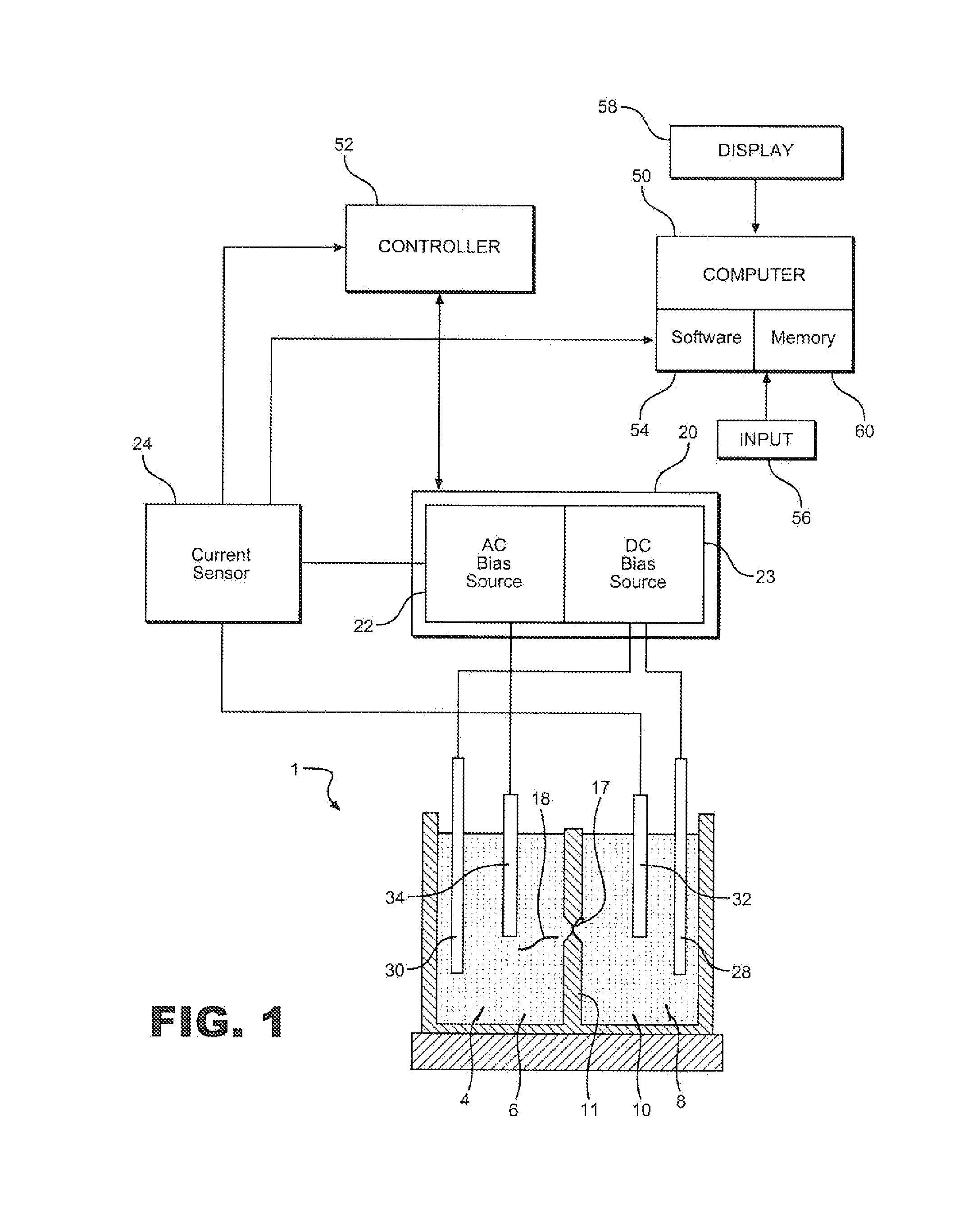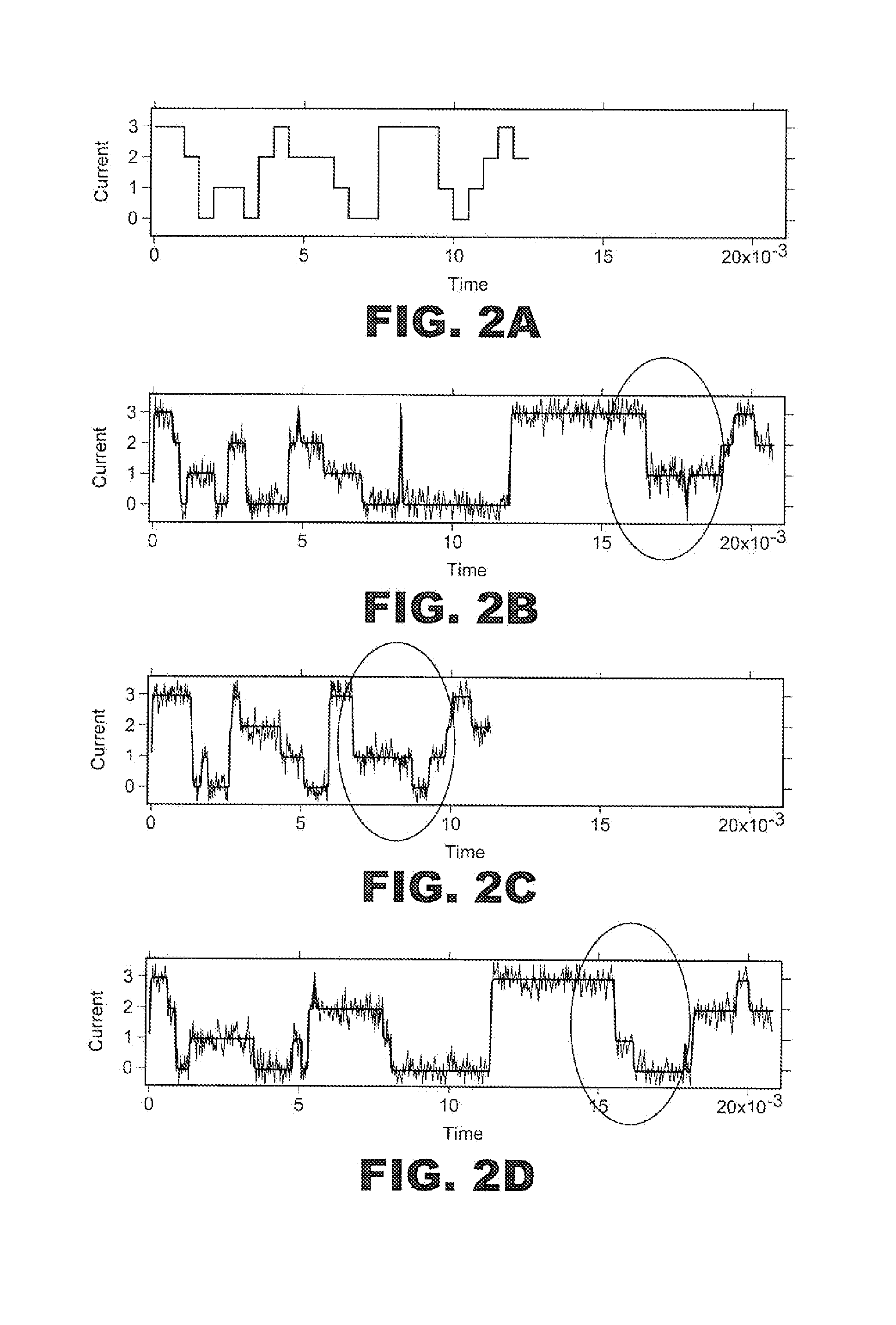Method for deducing a polymer sequence from a nominal base-by-base measurement
a polymer sequence and nominal base-by-base technology, applied in the field of sequence dna, can solve the problems of fundamentally limited sequencing, diffusive (brown) motion of polymers, controlling polymer position and motion, etc., and achieve the effect of improving the sequencing accuracy of the overall sequencing system
- Summary
- Abstract
- Description
- Claims
- Application Information
AI Technical Summary
Benefits of technology
Problems solved by technology
Method used
Image
Examples
Embodiment Construction
[0022]With initial reference to FIG. 1, a polymer sequencing system or sensing system 1 is utilized in accordance with the present invention. In general, sensing system 1 includes a first fluid chamber or electrolyte bath 4 within which is provided a first solution or electrolyte 6, and a second fluid chamber or sensing volume 8 provided with a second electrolyte 10. Sensing volume 8 is separated from electrolyte bath 4 by a barrier structure 11, which includes a nanopore or nano-scale orifice 17 that provides a fluid path connecting the first and second electrolytes 6 and 10. In one preferred embodiment discussed herein, orifice 17 is in the form of a protein pore embedded in a lipid bilayer across an opening in barrier structure 11 in a manner known in the art. In general, sensing system 1 controls the translocation of a polymer indicated at 18 through orifice 17 utilizing a translocation means or means for controlling the velocity of a polymer through orifice 17 in the form of a ...
PUM
 Login to View More
Login to View More Abstract
Description
Claims
Application Information
 Login to View More
Login to View More - R&D
- Intellectual Property
- Life Sciences
- Materials
- Tech Scout
- Unparalleled Data Quality
- Higher Quality Content
- 60% Fewer Hallucinations
Browse by: Latest US Patents, China's latest patents, Technical Efficacy Thesaurus, Application Domain, Technology Topic, Popular Technical Reports.
© 2025 PatSnap. All rights reserved.Legal|Privacy policy|Modern Slavery Act Transparency Statement|Sitemap|About US| Contact US: help@patsnap.com



